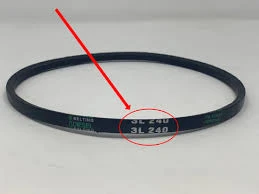- Arabic
- French
- Russian
- Spanish
- Portuguese
- Turkish
- Armenian
- English
- Albanian
- Amharic
- Azerbaijani
- Basque
- Belarusian
- Bengali
- Bosnian
- Bulgarian
- Catalan
- Cebuano
- Corsican
- Croatian
- Czech
- Danish
- Dutch
- Afrikaans
- Esperanto
- Estonian
- Finnish
- Frisian
- Galician
- Georgian
- German
- Greek
- Gujarati
- Haitian Creole
- hausa
- hawaiian
- Hebrew
- Hindi
- Miao
- Hungarian
- Icelandic
- igbo
- Indonesian
- irish
- Italian
- Japanese
- Javanese
- Kannada
- kazakh
- Khmer
- Rwandese
- Korean
- Kurdish
- Kyrgyz
- Lao
- Latin
- Latvian
- Lithuanian
- Luxembourgish
- Macedonian
- Malgashi
- Malay
- Malayalam
- Maltese
- Maori
- Marathi
- Mongolian
- Myanmar
- Nepali
- Norwegian
- Norwegian
- Occitan
- Pashto
- Persian
- Polish
- Punjabi
- Romanian
- Samoan
- Scottish Gaelic
- Serbian
- Sesotho
- Shona
- Sindhi
- Sinhala
- Slovak
- Slovenian
- Somali
- Sundanese
- Swahili
- Swedish
- Tagalog
- Tajik
- Tamil
- Tatar
- Telugu
- Thai
- Turkmen
- Ukrainian
- Urdu
- Uighur
- Uzbek
- Vietnamese
- Welsh
- Bantu
- Yiddish
- Yoruba
- Zulu
Ноя . 07, 2024 14:20 Back to list
Understanding the Role of the Engine Belt in Automotive Performance and Maintenance
Understanding the Engine Belt in Cars An Essential Component for Performance
Engine belts are critical components in any vehicle, playing a vital role in the overall functionality of a car's engine. While they may often go unnoticed until malfunctions occur, their importance cannot be overstated. In this article, we will discuss the various types of engine belts, their functions, and maintenance tips for ensuring longevity and optimal performance.
Types of Engine Belts
There are primarily three types of belts found in modern vehicles the serpentine belt, the timing belt, and the V-belt. Each serves a unique purpose
1. Serpentine Belt The serpentine belt is a long, continuous belt that snakes around multiple pulleys. It is responsible for driving various engine accessories, such as the alternator, power steering pump, water pump, and, in many cases, the air conditioning compressor. Its design allows it to efficiently transfer power to multiple components with a single belt instead of several individual belts.
2. Timing Belt The timing belt is crucial for synchronizing the rotation of the crankshaft and camshaft(s) in the engine. This synchronization ensures that the engine’s valves open and close at the correct times in relation to the position of the pistons. Timing belts can be made from rubber or a reinforced composite material. Unlike serpentine belts, timing belts are typically located inside the engine cover and require more effort to replace.
3. V-Belt V-belts are the traditional belt design, featuring a trapezoidal cross-section. They are primarily used in older vehicles but can still be found in some modern cars. V-belts are usually dedicated to individual components and may drive the alternator or water pump separately.
Functions of Engine Belts
The primary function of engine belts is to transfer mechanical power from the engine to ancillary components. Each type of belt serves specific functions
- Serpentine Belt By driving multiple components, the serpentine belt helps ensure the engine runs smoothly and efficiently. It increases the performance of critical systems, including electrical generation and steering capabilities.
engine belt in car

- Timing Belt The timing belt is essential for the engine's internal timing system. If the timing is off, it can lead to poor engine performance or catastrophic failure, resulting in extensive damage to internal engine components.
- V-Belt V-belts primarily serve similar functions as serpentine belts but do so individually, making them less efficient in some applications. However, certain mechanical systems still utilize this design due to its simplicity.
Maintenance of Engine Belts
Proper maintenance of engine belts is crucial for ensuring vehicle reliability and long-term performance. Here are some maintenance tips
1. Regular Inspection Drivers should routinely inspect their engine belts for signs of wear and tear. Look for fraying edges, cracks, or signs of glazing (a shiny, hardened surface). Any of these conditions may lead to belt failure and should warrant a replacement.
2. Check Tension Engine belts require proper tension to function effectively. A loose belt can slip off pulleys, leading to component failure, while a belt that is too tight can strain the bearings in engine accessories. Most vehicles have a tensioner system that should be checked during routine maintenance.
3. Replace on Schedule Timing belts, in particular, have a service life that varies by manufacturer. Consult the vehicle’s owner's manual for the recommended replacement intervals, which can range from 60,000 to 100,000 miles. Neglecting to replace a worn timing belt can result in severe engine damage.
4. Listen for Noise Unusual sounds, such as squeaking or chirping, can indicate issues with engine belts. These noises often signal wear or potential misalignment, prompting the need for immediate attention.
Conclusion
In summary, engine belts are indispensable for the proper functioning of a vehicle's engine and its related systems. Understanding their types and functions can help drivers better appreciate their role in vehicle performance. Regular inspections and timely maintenance will go a long way in ensuring that these components operate efficiently, ultimately prolonging the life of the engine and enhancing the driving experience. Keeping an eye on your engine belts is a small yet significant step in vehicle ownership that can save time, money, and the hassle of unexpected breakdowns.
-
Korean Auto Parts Timing Belt 24312-37500 For Hyundai/Kia
NewsMar.07,2025
-
7PK2300 90916-T2024 RIBBED BELT POLY V BELT PK BELT
NewsMar.07,2025
-
Chinese Auto Belt Factory 310-2M-22 For BMW/Mercedes-Benz
NewsMar.07,2025
-
Chinese Auto Belt Factory 310-2M-22 For BMW/Mercedes-Benz
NewsMar.07,2025
-
90916-02660 PK Belt 6PK1680 For Toyota
NewsMar.07,2025
-
drive belt serpentine belt
NewsMar.07,2025

